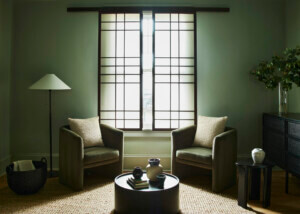If you were to glimpse inside Building 20 at the Brooklyn Navy Yard (née the New York Naval Shipyard) some 150 years ago, you would have witnessed a spectacle of mechanical brawn and mind-boggling ingenuity unfolding within a machine shop that ranked as the most ultra-modern of its kind in the late 19th century. Completed at the end of the Civil War in 1865, the cavernous factory building was the facility where the Department of the Navy fabricated armor plating for its fleet of wooden warships. Although its specific usage evolved over the decades as shipbuilding technology improved, Building 20 retained its role as a production powerhouse for the U.S. Navy well into the mid-20th century, with later activities including the manufacturing of parts for hydrogen fuel cell submarines.
Today, the tradition of advanced technology lives on at Building 20 with its newest tenant, Nanotronics. Harnessing AI, robotics, and 3D imaging, the Ohio-founded company is a leader in the development of optical inspection systems for semiconductors and other technologies. Nanotronics first established a presence at the New Lab of Brooklyn Navy Yard, now a sprawling urban manufacturing and innovation complex managed by the nonprofit Brooklyn Navy Yard Development Corporation, in 2016; five years later, the growing company settled into its new digs, a 44,000-square-foot flagship “smart factory,” in April 2021.
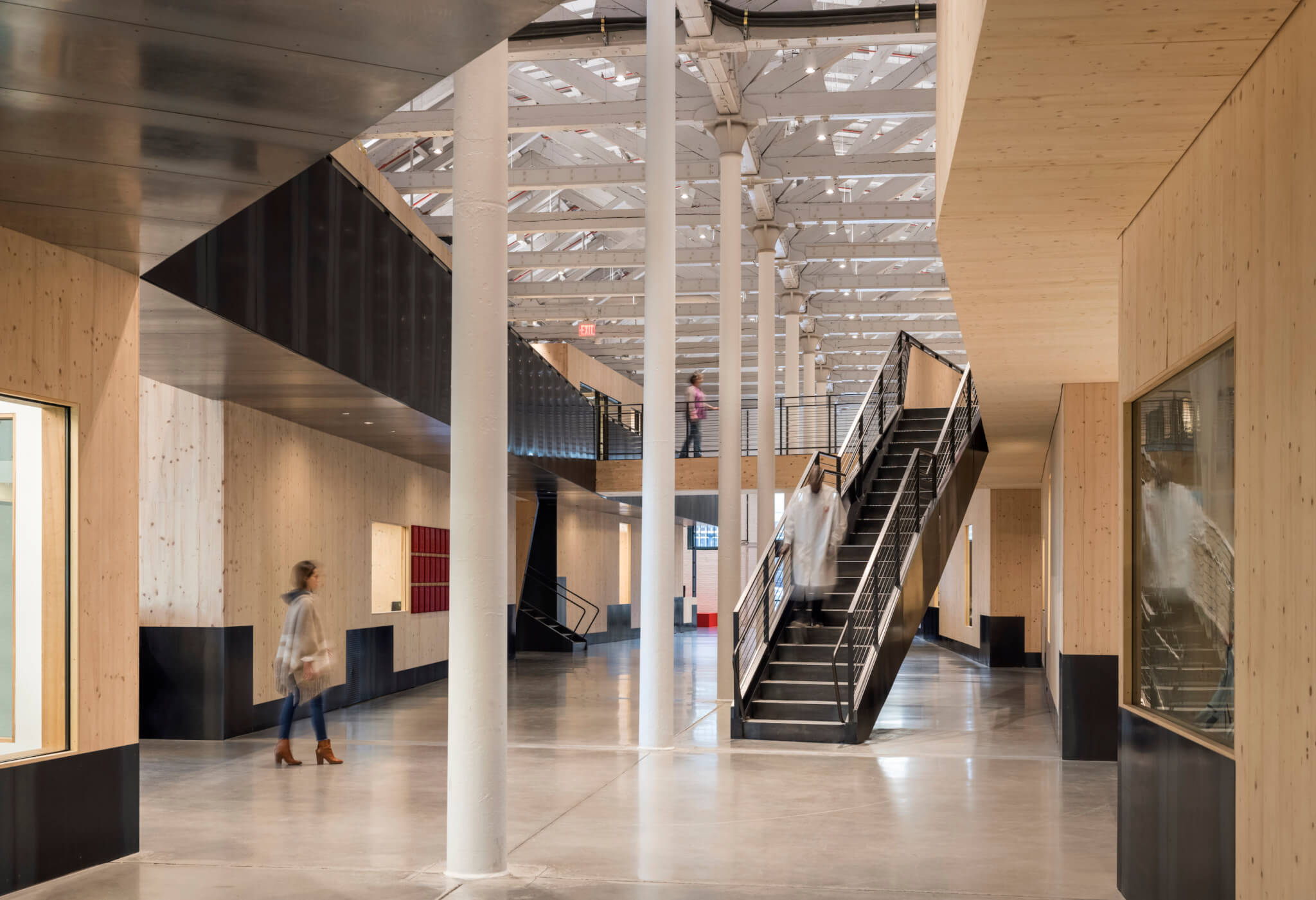
The move into Building 20, which had sat largely vacant in recent years save for its occasional use in TV shoots and as a storage facility, enabled Nanotronics to bring its different departments—namely R&D, design, and fabrication—under a single, collaboration-fostering roof. The adaptive reuse of the historic building, which now accommodates over 100 employees, also facilitated a nontraditional use of engineered wood in one of the first built cross-laminated timber (CLT) projects in New York City.
In a design helmed by architecture and urban design practice Rogers Partners, the brick shell of Building 20 is now populated by four stacked “pods” constructed with CLT walls, floors, and lids. (Structural engineering was provided by Silman, and CLT was sourced from Austria-based manufacturer binderholz.) Large interior windows that provide views into the not-quite-rectangular volumes from the factory’s double-height circulation areas promote cross-department interaction and transparency while allowing visitors—there are many, thanks to Nanotronics’s STEM-focused educational and workplace development outreach—an inside look at how advanced robotic industrial microscopes are developed and made.
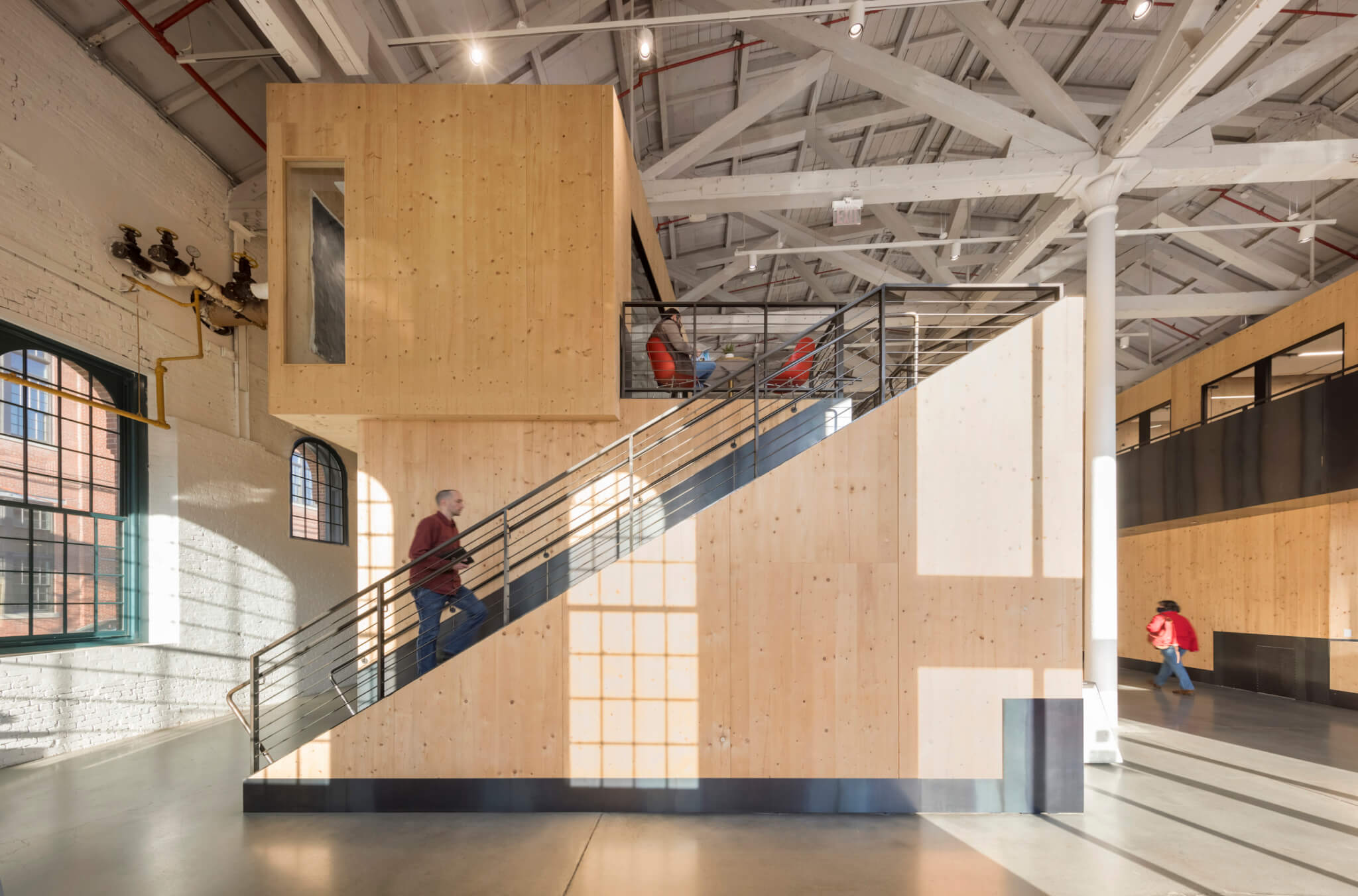
“We didn’t want to just do the typical, which is carve the space in half and make half of it clean and half of it dirty,” Vincent Lee, associate partner at Rogers Partners, explained to AN.
“We started investigating space needs and saw how to build pods that would allow for the level of enclosure, cleanliness, and sound isolation in a way that worked.”
Bridges, also realized with engineered wood, link the pod configurations from above while blackened steel stairs connect the ground floor of the facility with the second level of the pod assemblage. Deliberate punches of color can also be found throughout the largely natural-toned space, including red accents and a breezy blue-green paint scheme in the kitchen/gathering area in the building’s annex, which brings semitropical vibes to the industrial Brooklyn waterfront.
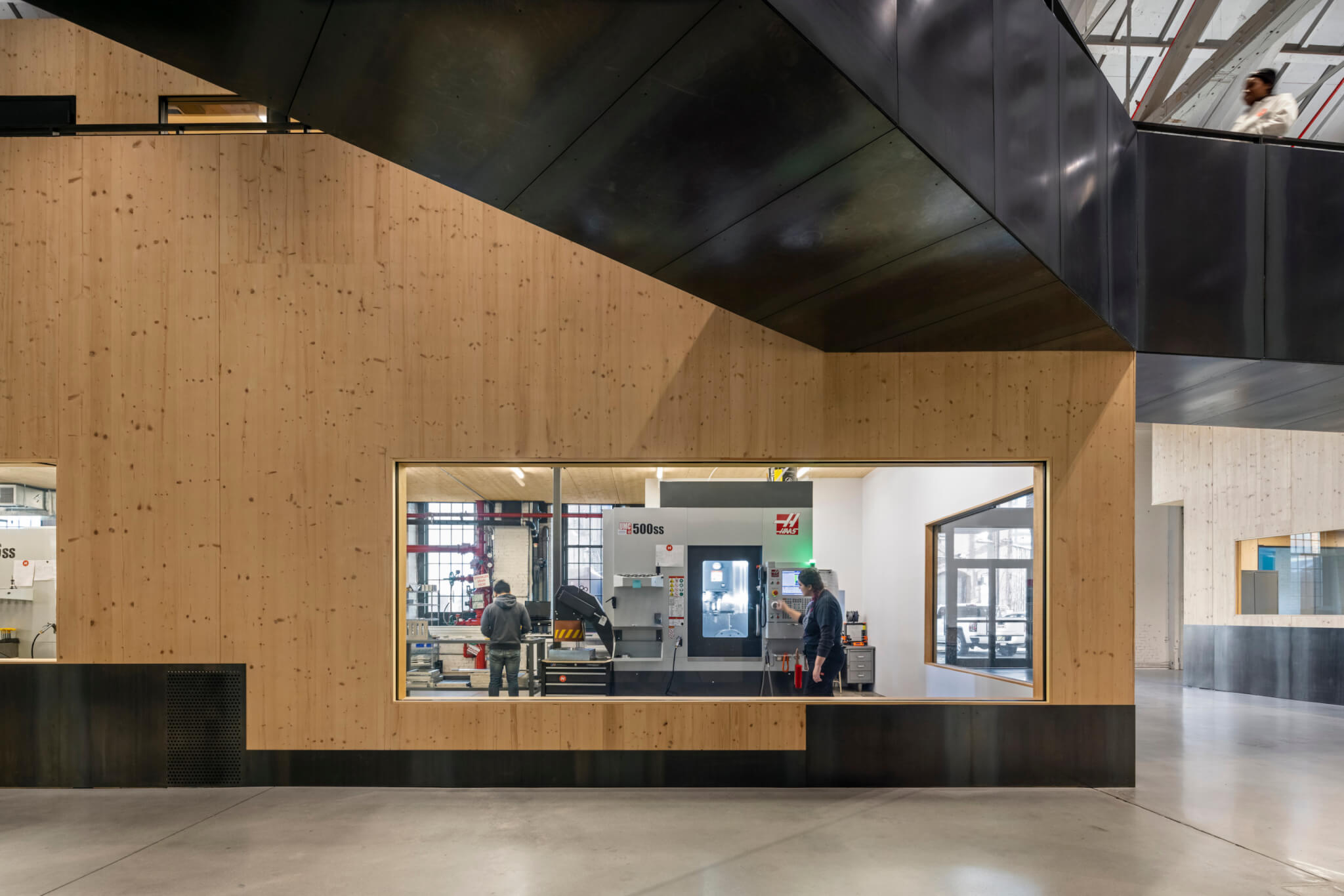
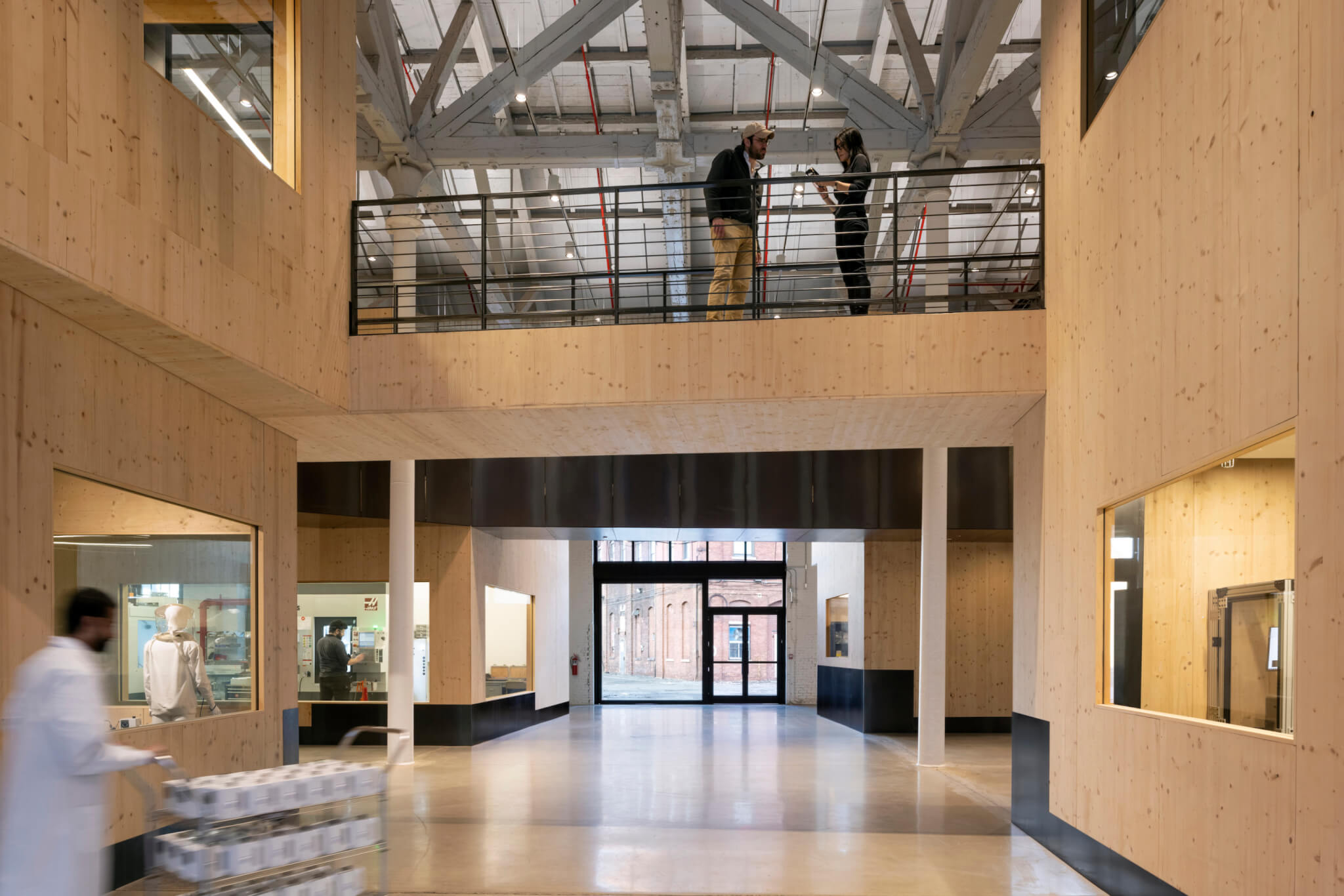
“The space has the comfort of wood in a foundation where invention happened,” Matthew Putman, cofounder and CEO of Nanotronics, said. “It uniquely provides labs, factories, and space for impromptu meetings in ways that have been crucial to the exchange of ideas and building of critical products.”
The use of engineered wood enabled construction to unfold at a brisk pace. As Lee explained, the assembly time for the CLT pod structures was a quick 28 days, although the pandemic did slow the project on its larger journey to completion, as did the catastrophic, supply chain–disrupting explosion at the Port of Beirut in August 2020. (Nanotronics partially moved into the building prior to its formal opening to ramp up prototyping and production of a noninvasive ventilator during the COVID-19 crisis.) Additionally, CLT provided valuable carbon sequestration; this interior stores an estimated 411.2 metric tons of CO2.
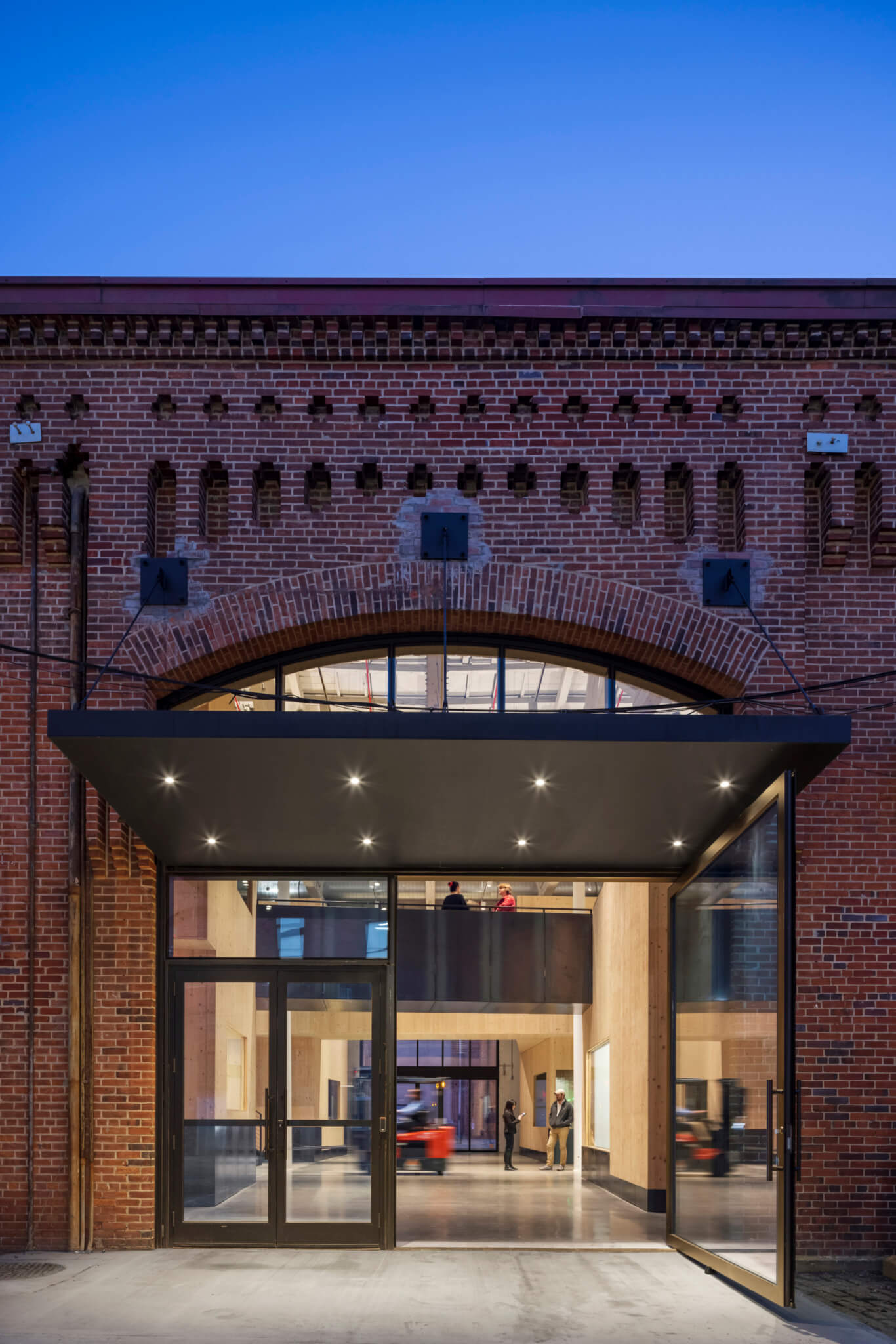
Construction speed was further accelerated because both sides of the CLT were left exposed, which, as pointed out by Lee, is something of a rarity. “Being able to expose it on both sides and not having to do any drywall or finishing actually made it a feasible expenditure,” he said, adding that the project “took advantage of the way [CLT] works structurally to introduce geometry and playfulness.”
Though an interior installation did offer protection from the elements, assembling large CLT structures within an existing building proved to be a challenge. “Now that we’ve used CLT in a place where it turned out to be tougher to install, I can’t wait to use it in a more conventional way,” Lee said. The starring role of CLT in the smartest factory in the five boroughs also serves, of course, as a tidy tip of the hat to Building 20’s origins as a shipbuilding facility. As Lee put it: “The building now has wood and steel vessels in it again.”









